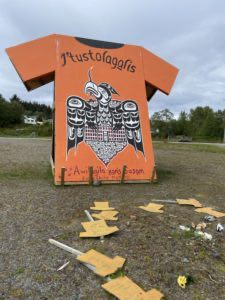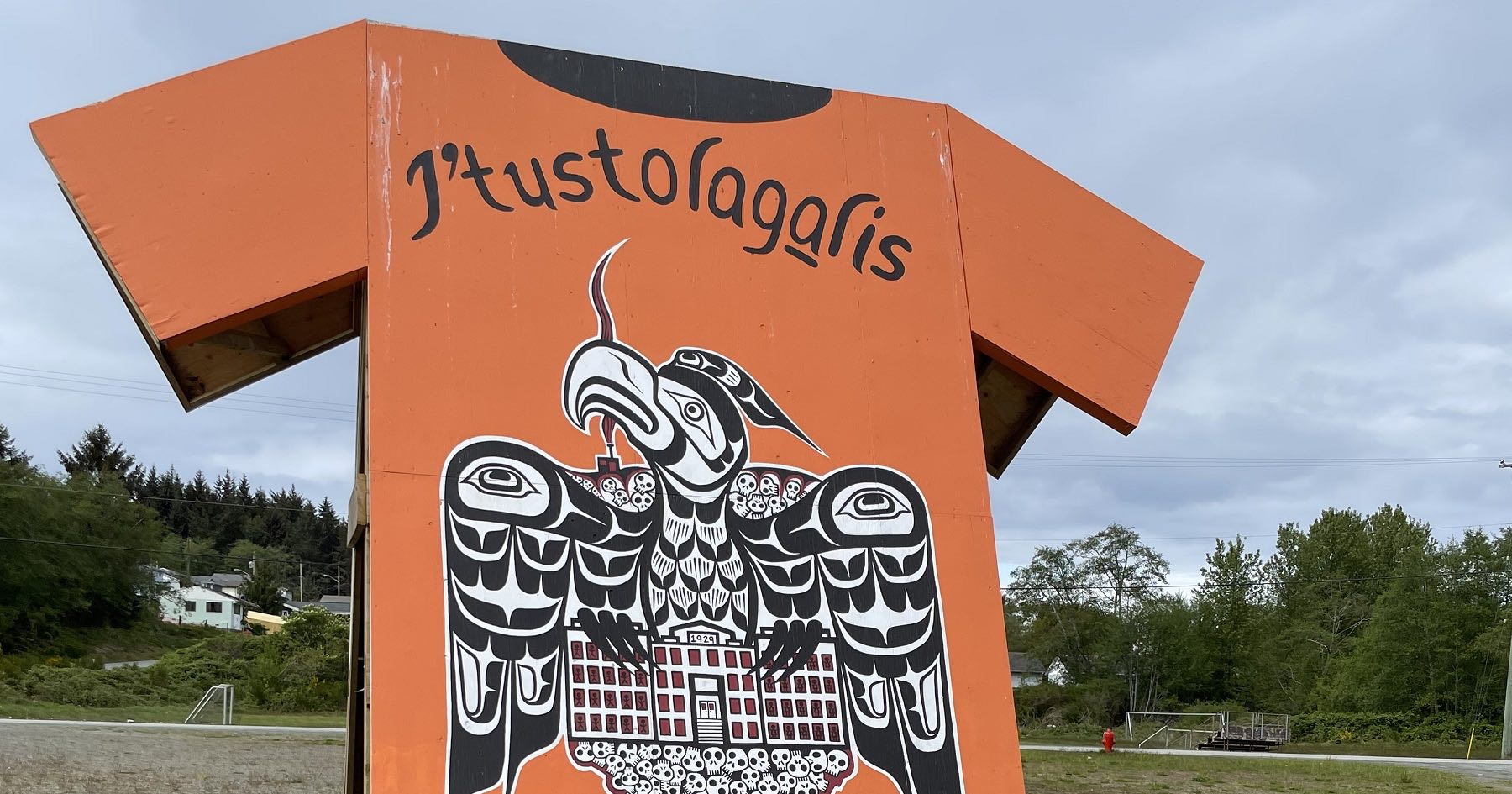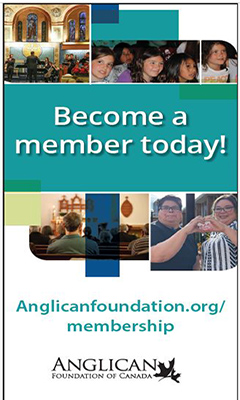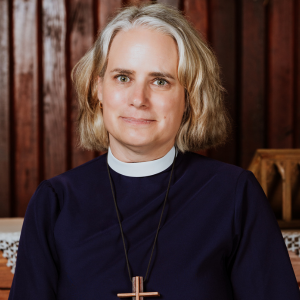As a diocese we are all experiencing the shifting realities of our lives in similar and distinct ways. Our past is marked with both stories of faithfulness and stories of sin. Our present is increasingly uncertain and we know there are difficult decisions to make. We see opportunities for new life, but know that means letting go of some of what has been. Nowhere are these truths felt more strongly than in Alert Bay.
In mid-May I travelled to ‘Yalis. Having previously been on the island last May, it was an honour and a privilege to be back on the island and to have time with the people of Christ Church, of ‘Namgis Nation, and of Whe-la-la-U.
My visit started with a Sunday evening confirmation service in the church — the first confirmation on the island in a decade. It was a joyous intergenerational event with singing in both English and Kwak’wala.
Monday morning, I stood on the land on which St. Michael’s Residential School once stood. It is now marked with a giant wooden orange t-shirt, about 20 feet high, on which is painted a poignant image of the school, skulls and a huge bird. The image is at once haunting and hopeful. I offered silent prayers before going to the Elders’ centre for a potluck lunch with members of the parish. We discussed their sadness that Will Hubbard, incumbent at Christ Church, is leaving at the end of June and the uncertainty that their parish, like so many of our parishes, is facing. Monday afternoon, I also sat with some of the staff of Whe-la-la-U. Whe-la-la-U is a collaborative agreement of four Kwakwa’ka̱’wakw tribes: Mamaliliḵa̱la, Ławit̓sis, Da̱’naxda’x̱w and Ḵwiḵwa̱sut̓inux̱w. The word Whe-la-la-U was derived from the Kwak’wala word ‘Wi’wa̱lsg̱a’makw which means “All Tribes Together.” They have a 12 acre “reserve within a reserve” on ‘Yalis. They are not ‘Namgis but from tribes that left their original lands to be closer to their children at St. Michael’s or to services and housing that the government promised but never delivered.

On Tuesday I was joined by Elizabeth Northcott, archdeacon for the mid-north islands region, and by Brendon Neilson, vision animator. Along with Will Hubbard, we spent the day with residential school Survivors and two members of Whe-la-la-U, who are also members of the steering committee for the project looking for unmarked graves on the island. We discussed how anything that happens should be Survivor-led. Children from over 45 nations were taken to the school and there is hope that at some time in the process there will be an opportunity for any Survivors who wish to attend to gather in the Big House. One Elder suggested that what we were envisioning was Nakistanakwala which is Kwak’wala for putting everything back into balance.
Tuesday afternoon, Elizabeth and I also had a short meeting with Nawalakw, which is doing remarkable work on language and cultural revitalization, particularly with youth. The diocese has made a small contribution towards a summer language immersion program for youth.
On Wednesday, we met with the Contextual Society. This is a ministry with a long tradition on the island that expresses a faith that is contextual to Kwakwa’ka‘wakw culture. The society was formalized in 2016 and was granted funding for translation of Biblical materials into Kwak’wala. We met with members for a discussion of how the church can best support the community. As on my previous visit, the overwhelming concern of the Elders is for the youth of the island and the outstanding need for a youth centre and more services for youth. The idea emerged of using the rectory for a youth centre and community gathering space. Wednesday afternoon, this idea was discussed with members of the parish. One member’s eyes lit up as he contemplated being able to teach the youth of the island traditional ways, such as how to gather seaweed and other traditional foods. Everyone agreed that the island certainly needed a youth centre. We also discussed possibilities for an ongoing pastoral presence on the island.
As the ferry pulled away from the island on Monday, Brendon and I talked about how much grief there is on the island. Grief at having lost so much of their traditional territory and way of life, grief at the loss of the salmon, grief at the loss of life at the residential school, grief at the broken families that the school left in its wake. Grief at how many youth suicides, drug toxicity deaths and other tragedies there have been on the island. Grief that the church is changing and there will soon no longer be a full-time priest on the island.
But the island is also full of remarkable people, full of tremendous hope, resilience and possibility. Over and over again we heard that the church is an important part of the community. Members of ‘Namgis, Whe-la-la-U and the village of Alert Bay all spoke of how important the church is to them and the community. There was excitement about the new possibilities for working with community partners to better reach out to youth and to create an intergenerational gathering space.
As with most parish visits, I left with more questions than answers. I hold in my heart both the very real grief of the people of ‘Yalis as well as the hope that a new thing is rising in our midst.




